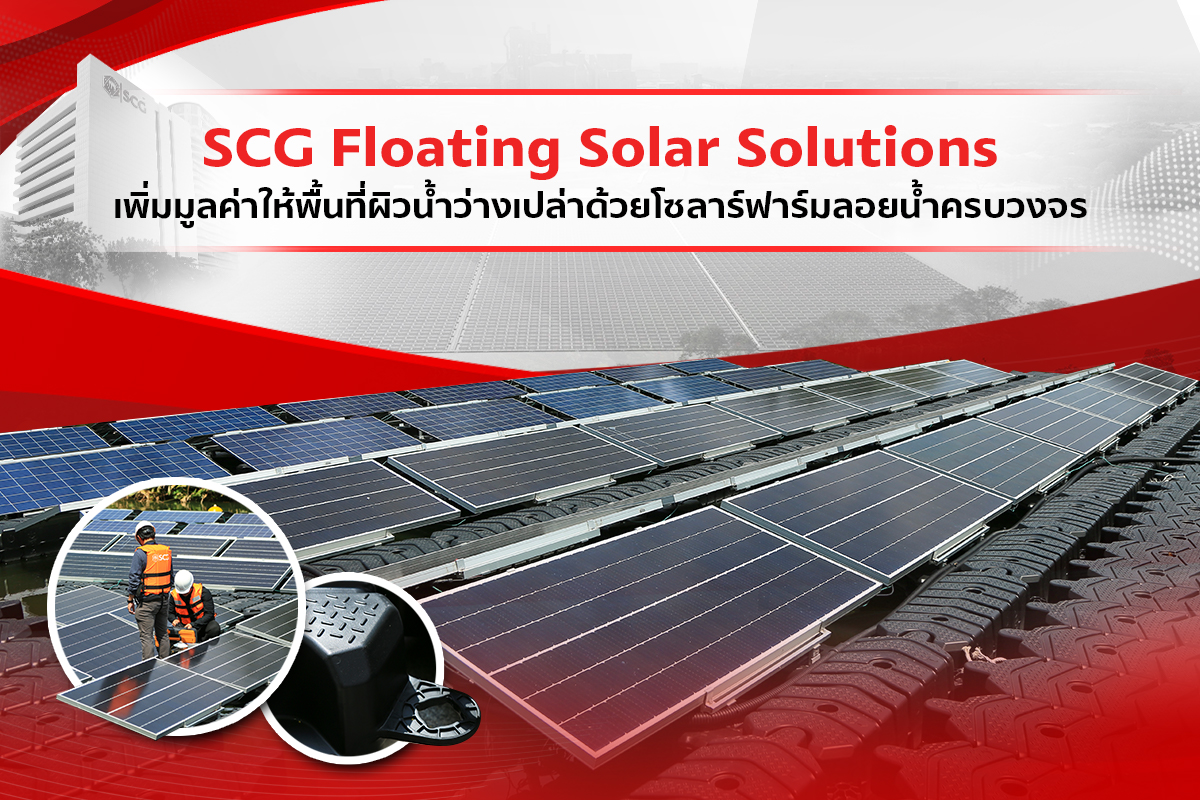Clean energy, also known as renewable energy, is energy that can be generated without creating pollution and is thus not only eco-friendly but also an excellent way to add value to existing resources and use them to the greatest advantage. One way to harness clean energy is to use photovoltaic cells to convert sunlight into electricity. In Thailand, solar cells, whether they are mounted on the ground, on rooftops, or water surfaces, have been gaining more traction, and thus Chemicals Business, SCG, has developed Thailand’s first floating solar solution, first deployed in 2018 in a water reservoir on the property of SCG’s plant.

Pisan Uawithya, Emerging Businesses Director of Chemicals Business, SCG , told us about the inception and development of the floating solar solution. “SCG recognized the various benefits of renewable energy. For instance, it can be used to produce power for self-consumption and also reduces carbon dioxide emissions. At the same time, SCG also saw that many water surfaces were underutilized and thus untapped resources. Therefore, bringing to the table its expertise on plastic materials and design, SCG decided to embark on a project with its business partners, and through that collaboration, ultimately developed an integrated floating solar solution – SCG’s proprietary innovative design that has been granted a patent.”
Special Properties from Unique Materials and Design
The setup of a floating solar farm is essentially the installation of plastic pontoons on the water surface to serve as bases for solar panel assets to be mounted on. Therefore, pontoons need to be durable, buoyant, and eco-friendly. SCG has successfully achieved all these qualities through the meticulously conceived design of the pontoon as well as the choice of material, which is a specially developed HDPE resin that gives the floating structure durability for outdoor use, resistance to UV rays, and a life span of over 25 years. In addition, the pontoon is recyclable and made of food-grade materials, making it safe for reservoir ecology.
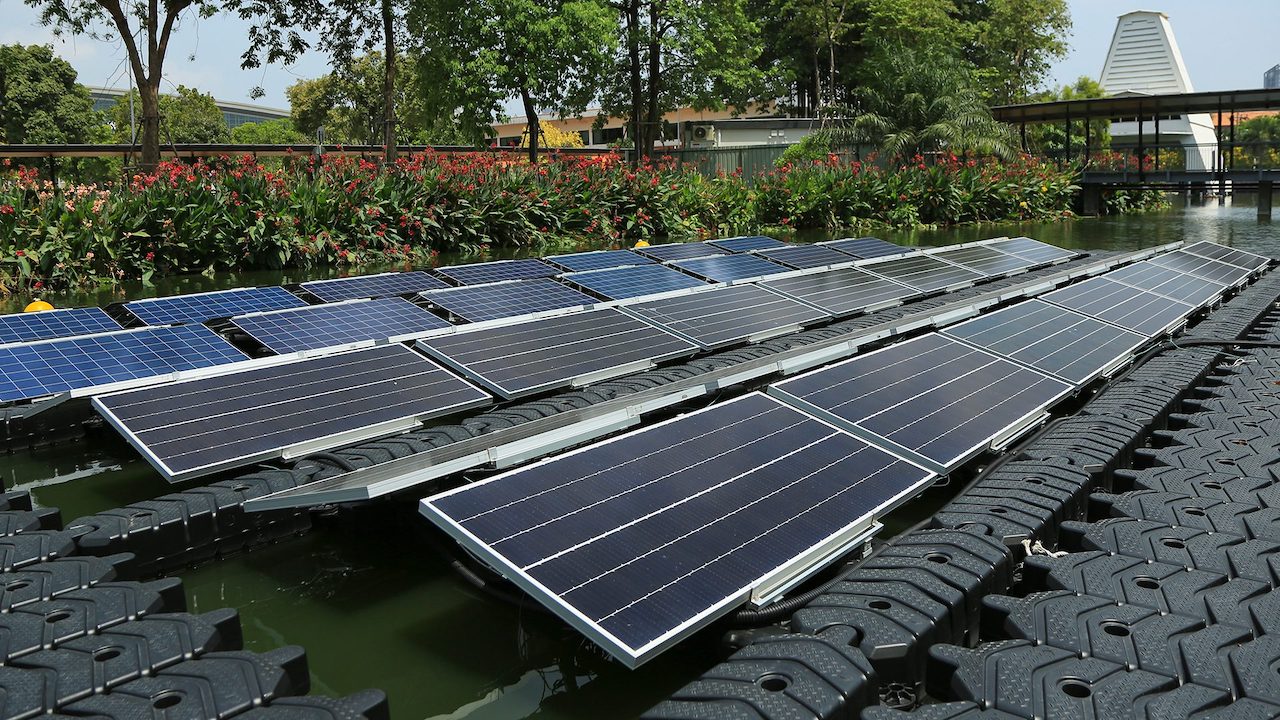
The overall floating pontoon system has also been designed to have over 30% opening area, allowing enough sunlight for marine life underneath. At the same time, the structure serves as a cover that reduces evaporation, while the cooling effect of the water increases the power generation efficiency of the solar farm.
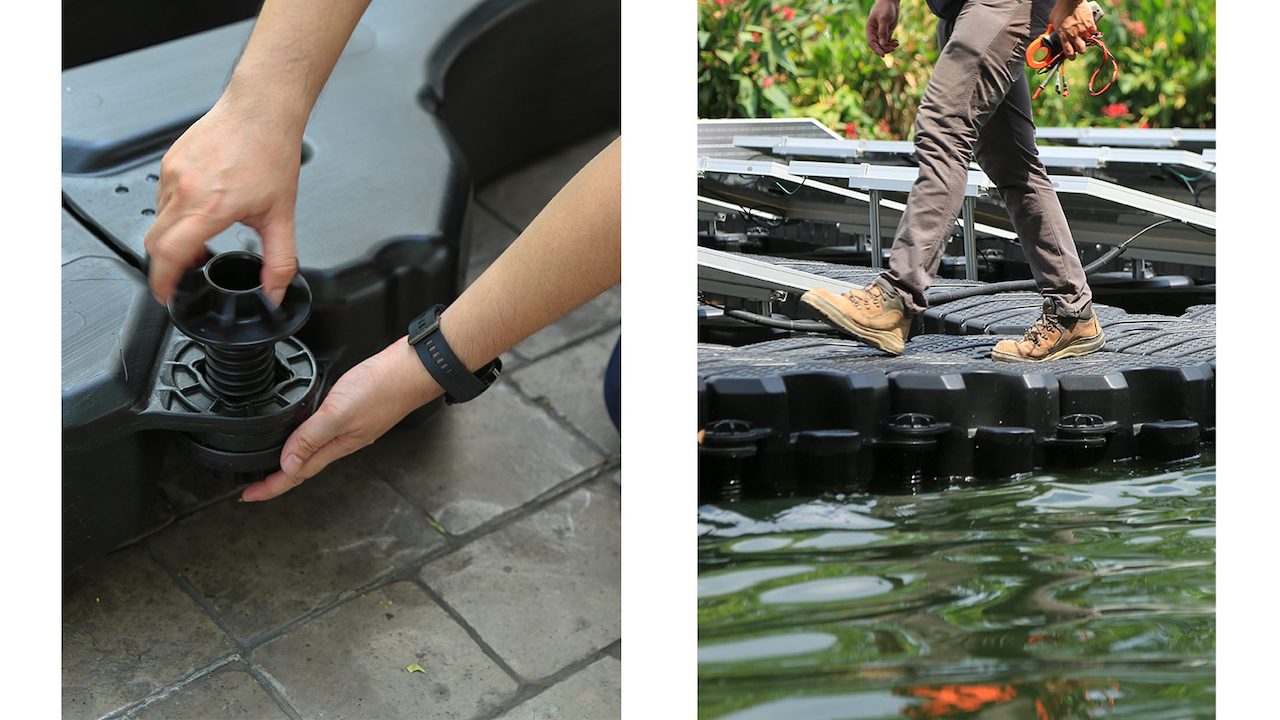
The pontoon system consists of two main components. The first component is the solar stand, which solar panels are attached to. This structure has been designed to be compatible with various types of solar panels and able to support the weight of heavier new-generation solar panels. In addition, the angle of the solar stand can be adjusted to maximize exposure to the sun. The second component is the walkway. Designed with the safety of engineers and maintenance personnel who have to walk on the structure to inspect and clean solar panels in mind, the floating walkway has higher buoyancy than regular models on the market and can bear up to 200 kilograms per square meter, allowing users to stand and walk with stability and, more importantly, prevent pontoons from sinking or wobbling, which can put people above them in danger.
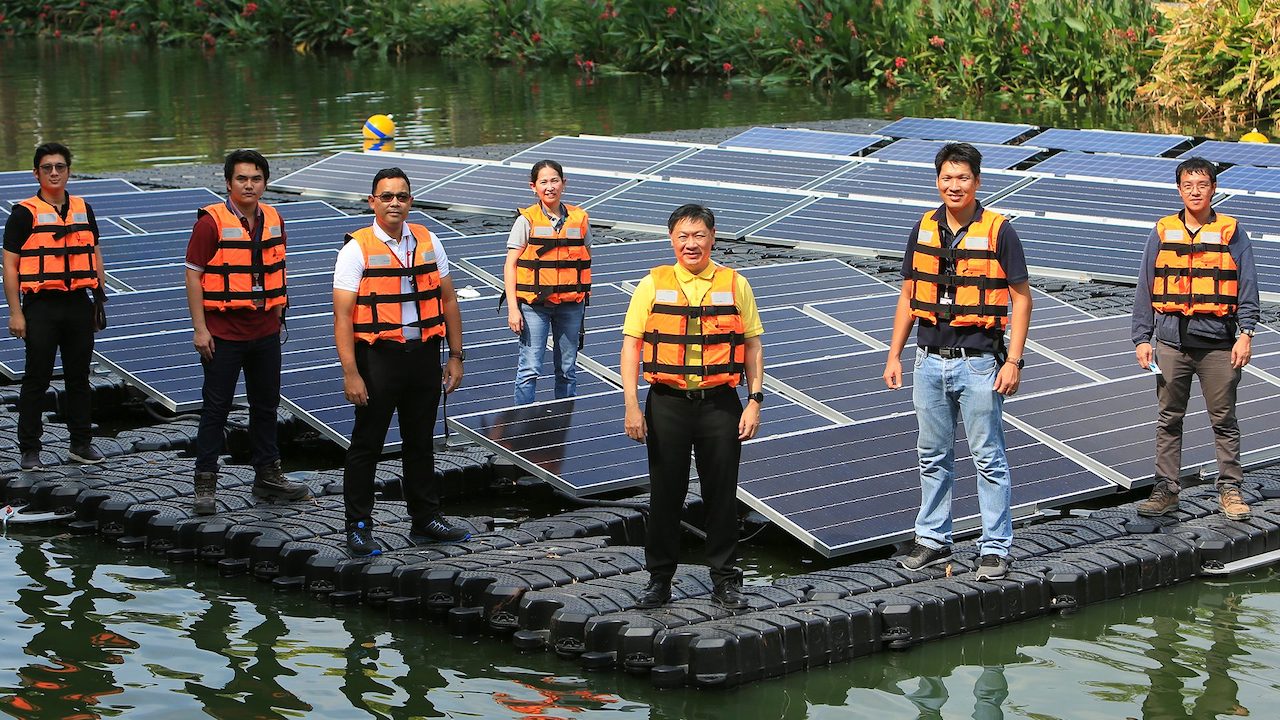
Furthermore, the team has developed special mooring and anchoring systems with enhanced durability and high tensile strength. Whether it’s the mooring or anchoring option, each system is customized to suit the terrain of each waterbody specifically to ensure that the pontoon system can weather the elements and withstand waves effectively.
Another key feature of the latest model of SCG Floating Solar Solutions is that it is not only designed to be easy to put together to save installation time but can also be assembled in different configurations, such as one row, two rows, or four rows of solar panels per one walkway, known as one-in-a-row, two-in-a-row, and four-in-a-row configurations respectively. These configurations can be chosen as users desire. The more rows of solar panels per walkway will save more space.
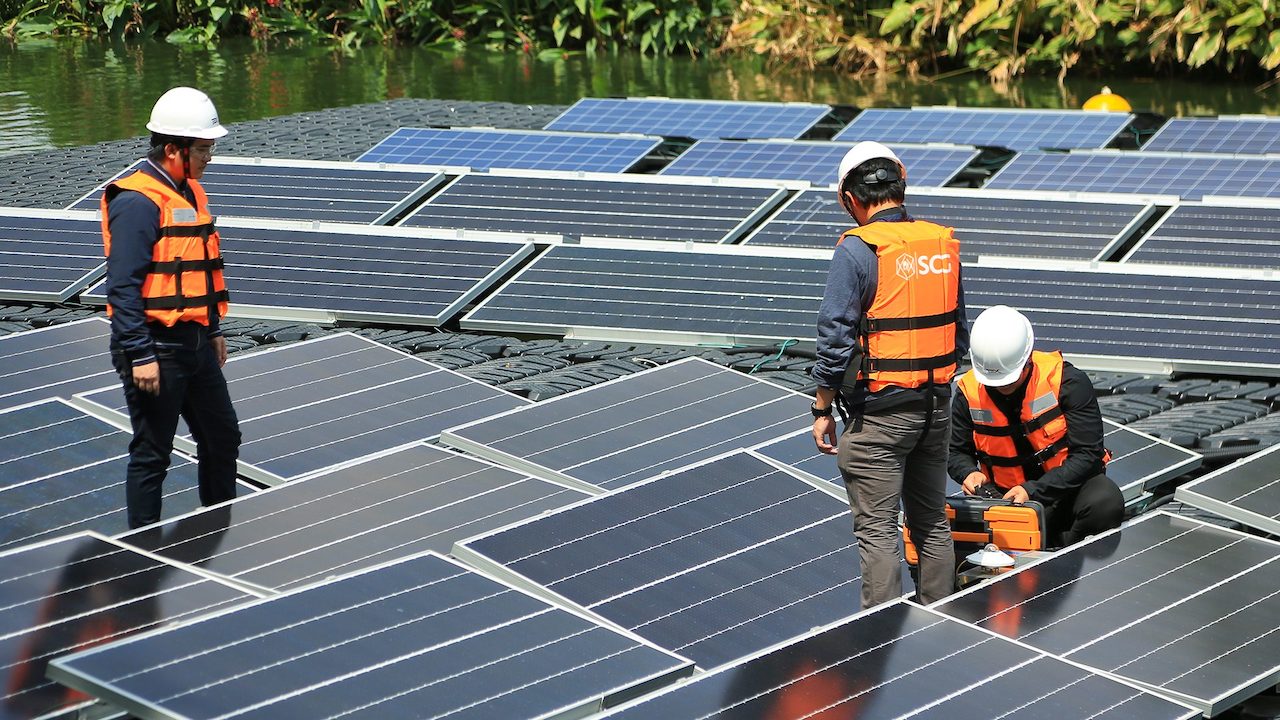
Floating Solar Farms: Sustainability for Business and the Environment
Pisan gave a suggestion on choosing a floating solar farm as a source of energy. “If you have water reservoirs such as ponds in factories or other large bodies of water, such as lakes or hydroelectric dams, you can add value to them by installing a floating solar farm to generate power for use in your factory or building, which contributes to the sustainability of your business and promotes the use of natural resources to the greatest advantage.”
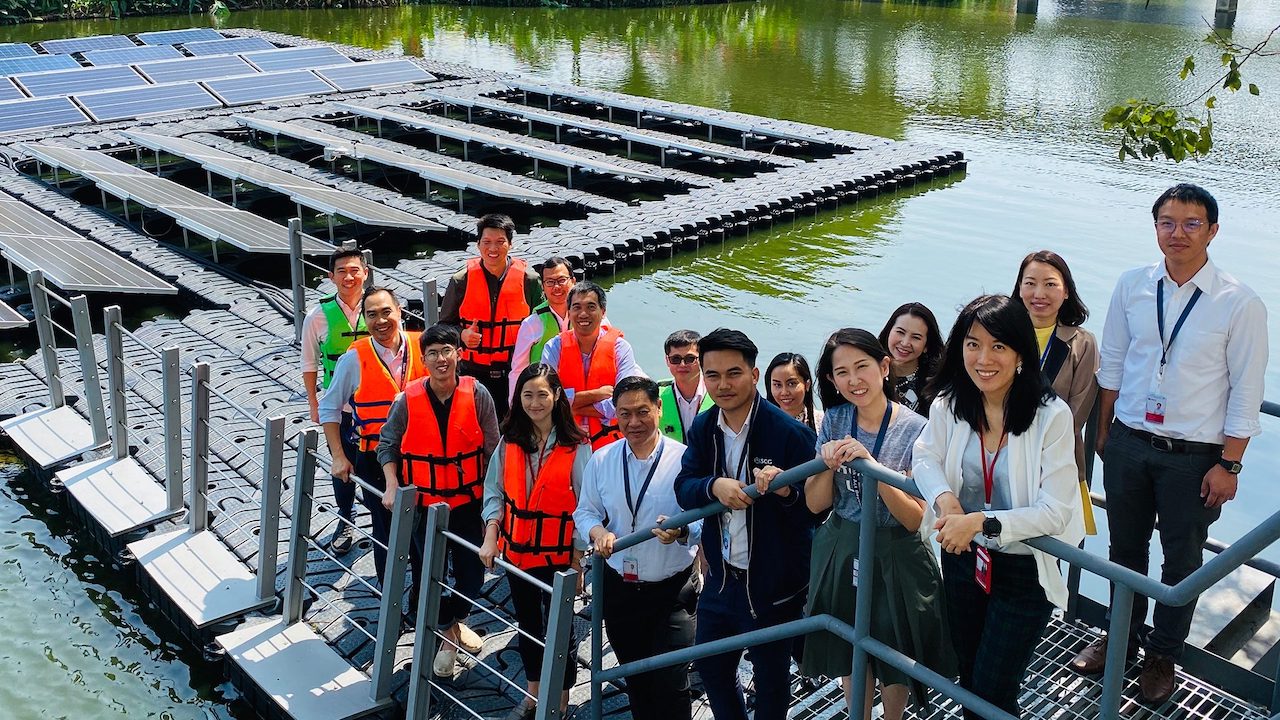
SCG Floating Solar Solutions offer a comprehensive range of services, from consultation on feasibility, customizing the design to suit the waterbody, engineering design, procurement and installation, to mooring and anchoring that ensures high safety as well as management and maintenance services while the floating solar farm is in operation, with product warranty up to 25 years. The payback period is about 5-8 years, depending on the size of the floating solar farm and power consumption.
For more information, please contact solarenergy@scg.com
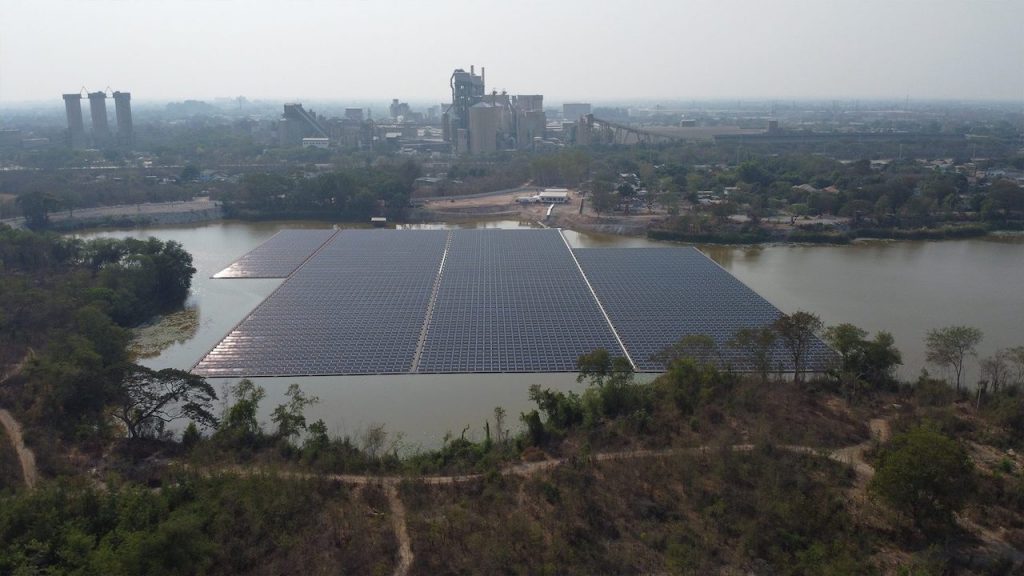
The total capacity of the floating solar farms installed and serviced by SCG Floating Solar Solutions is 14.6 MW as of March 2020.
- Chemicals Business, Rayong
- Sattahip Naval Base, Chonburi
- SERIS, Singapore
- SCG Headquarter, Bangkok
- Wat Sri Sang Tam, Ubon Ratchathani
- TCP2 Project, Prachin Buri
- SSI Project, Saraburi
- SENA Project, Ayutthaya
- Mae Tan Mine, Lampang
- STS Project, Nakhon Si Thammarat
- STL Project, Saraburi
- Mukdahan
- Amata City Industrial Estate, Chonburi
บทความนี้มีประโยชน์หรือไม่ ?
Average rating 3.5 / 5. Vote count: 2
No votes so far! Be the first to rate this post.

